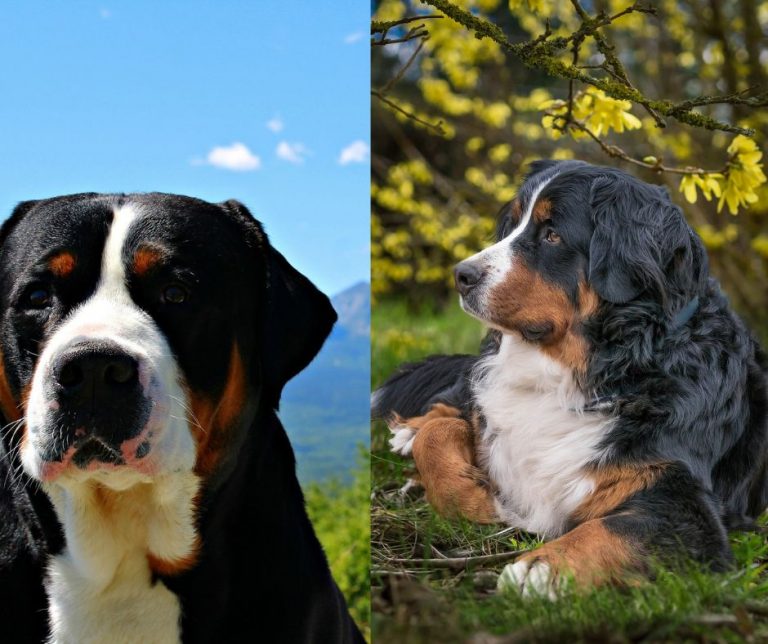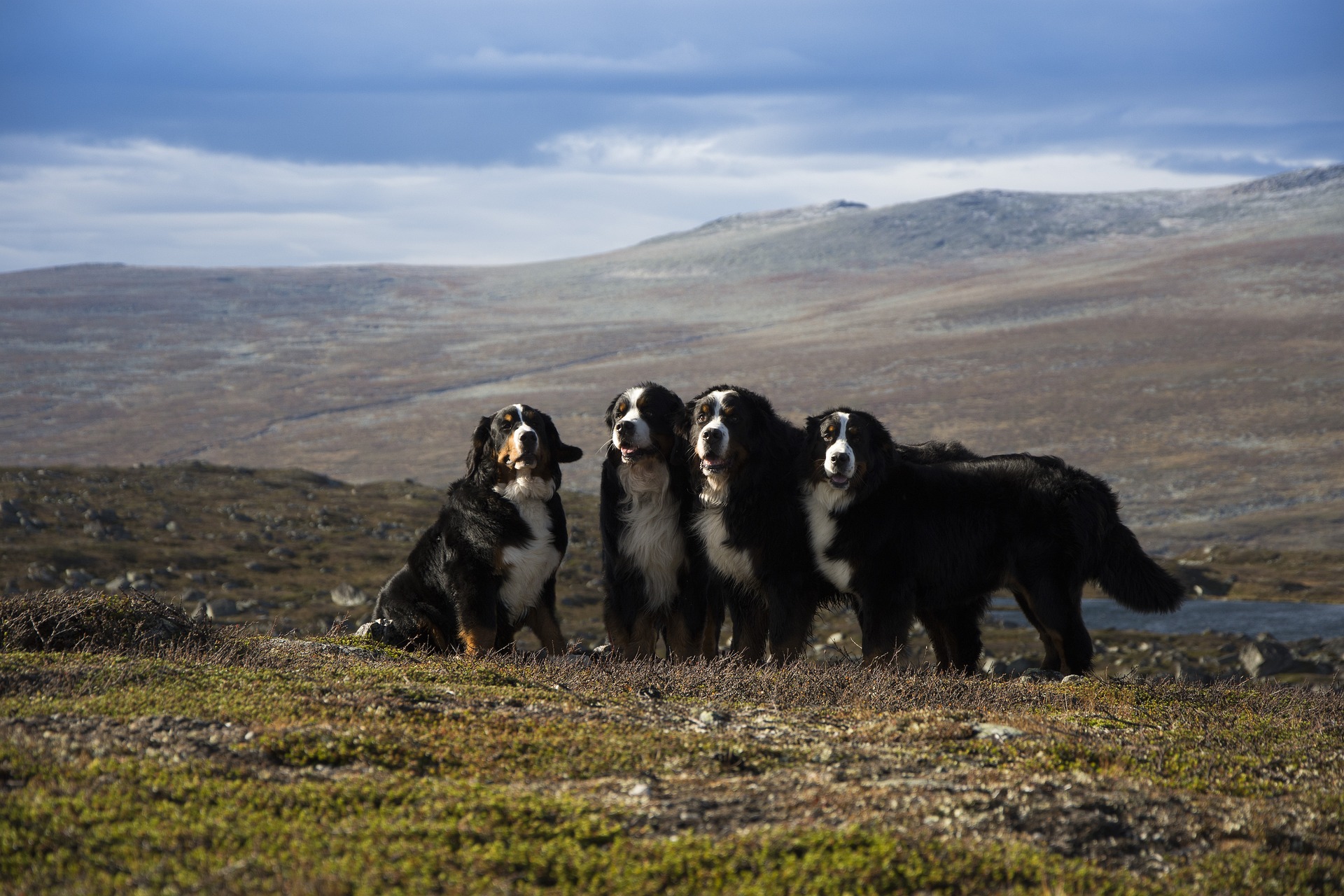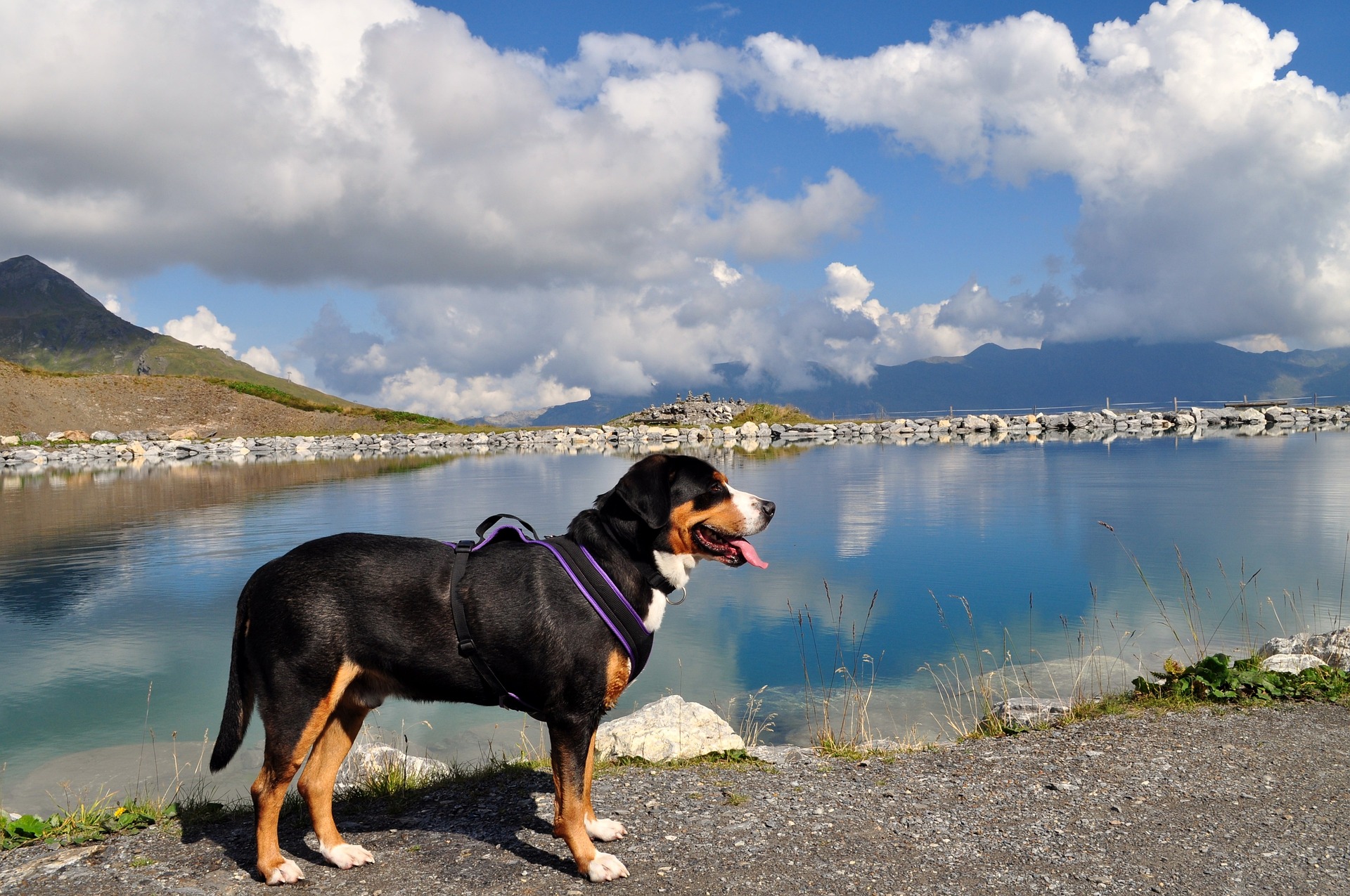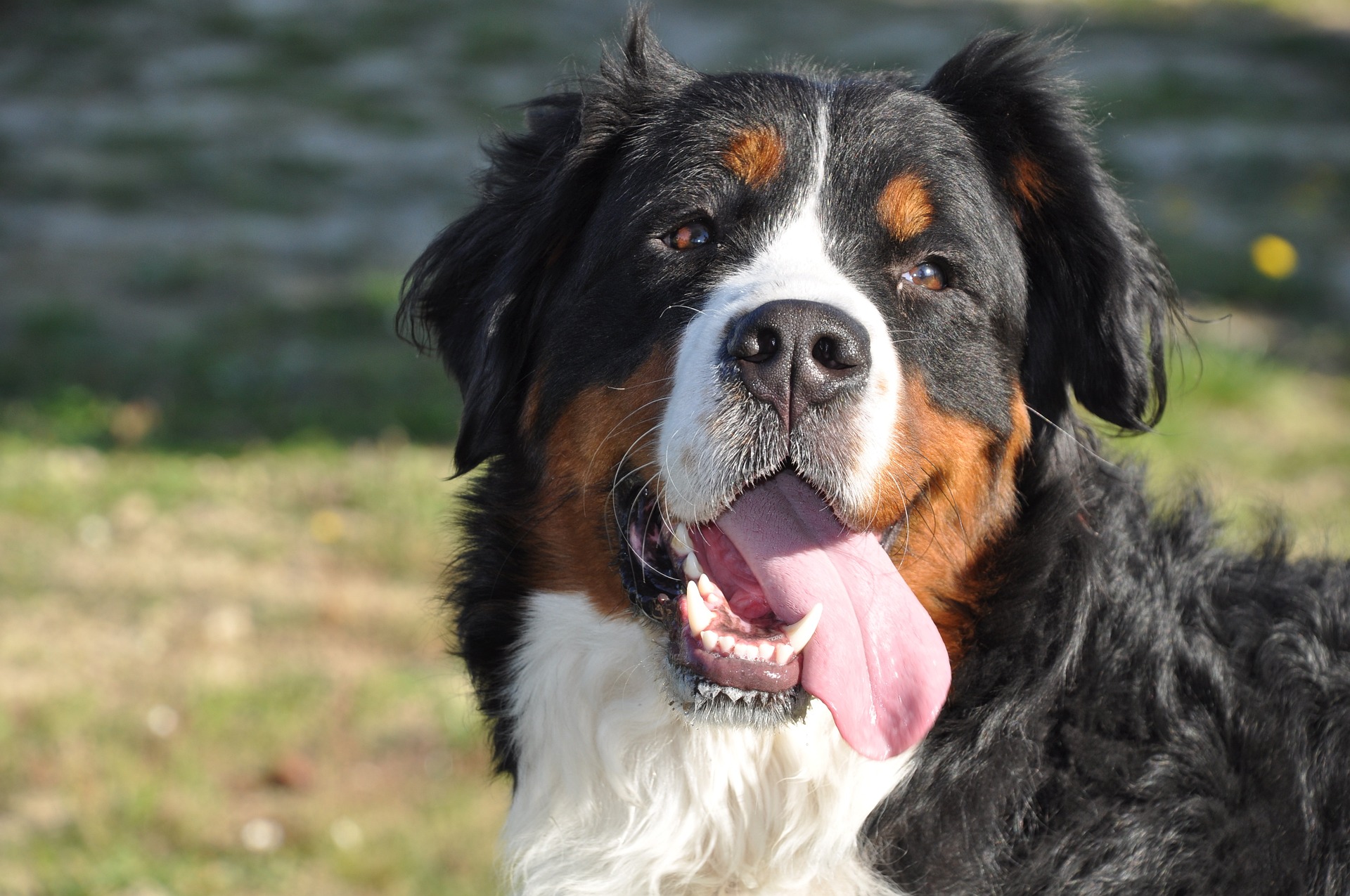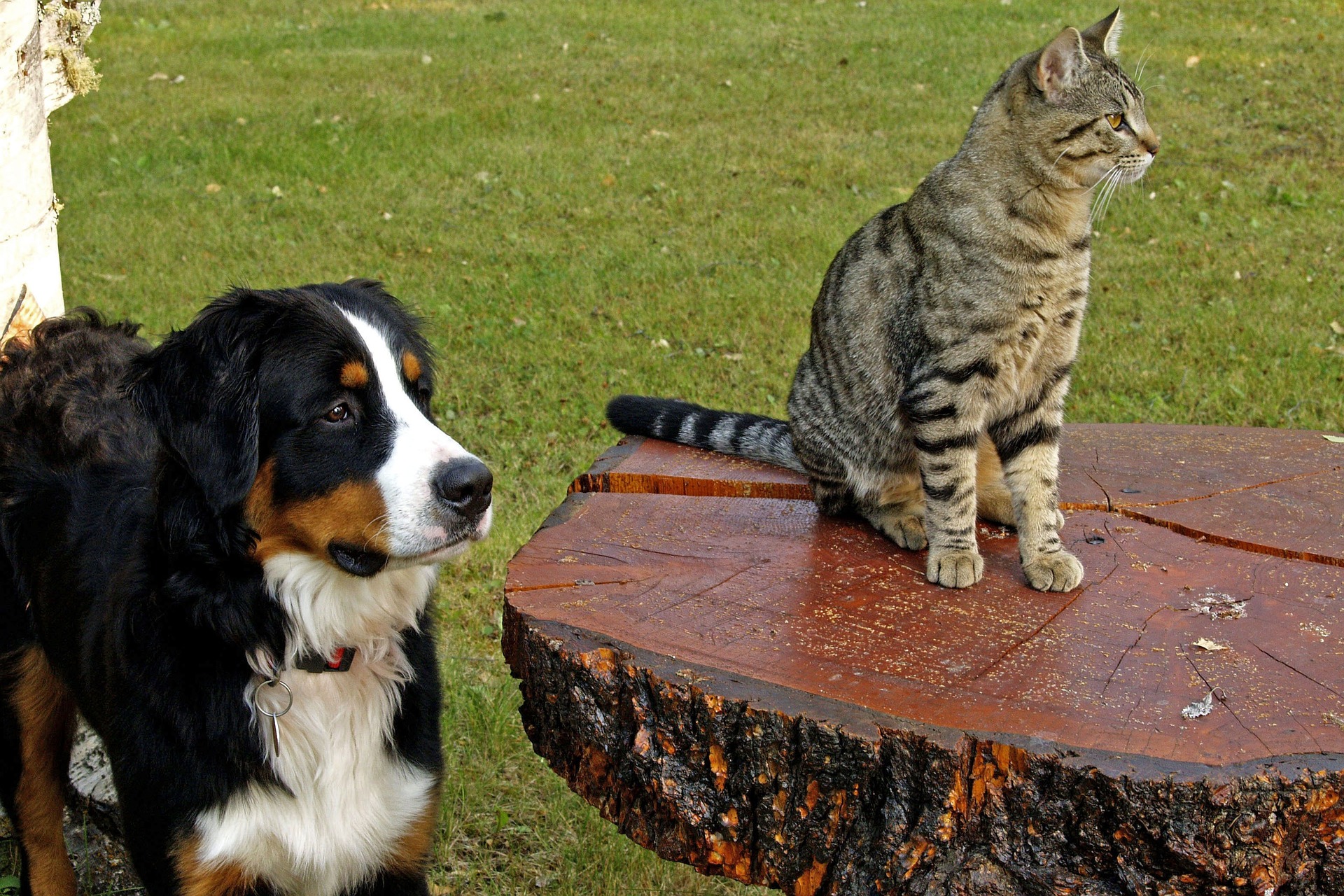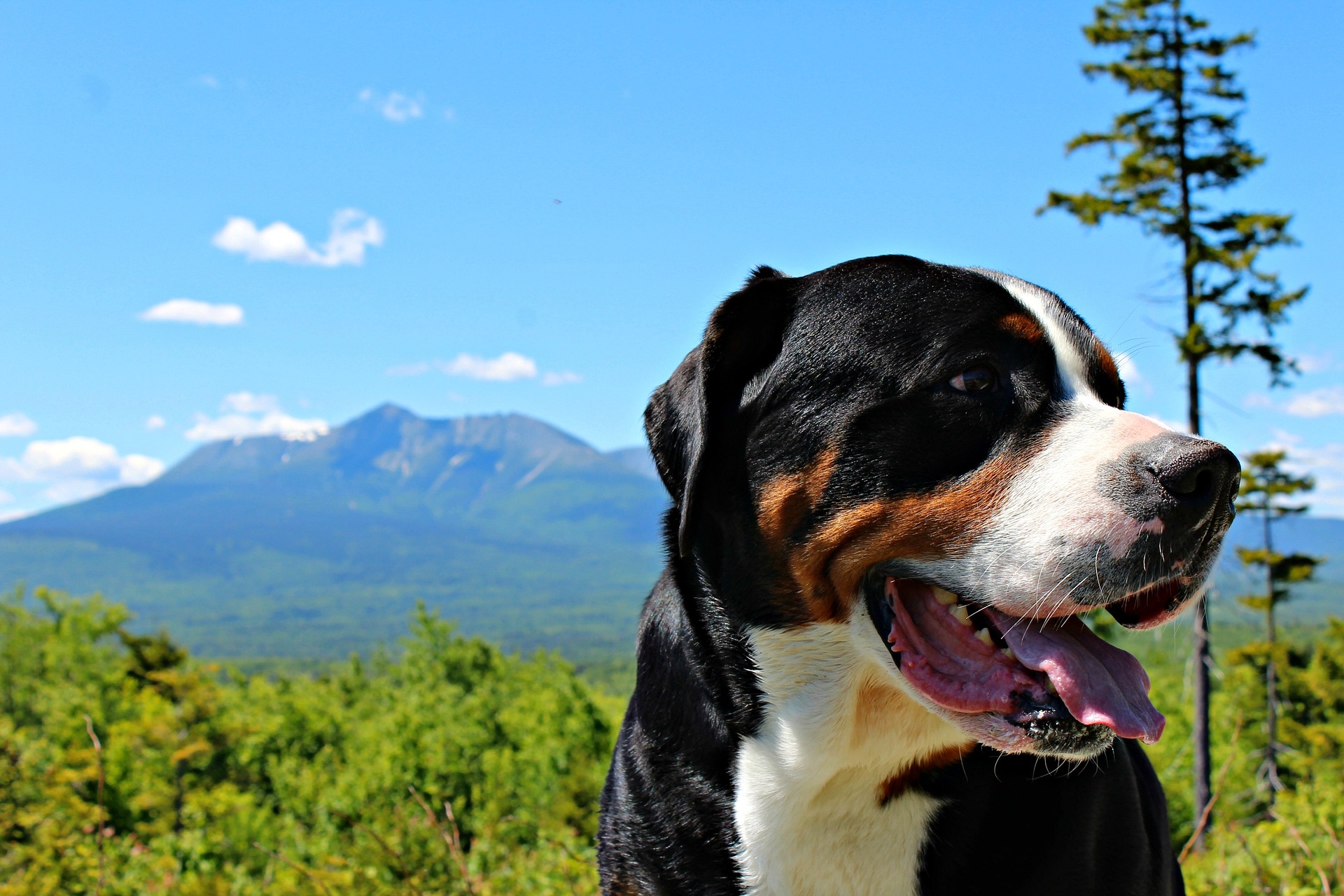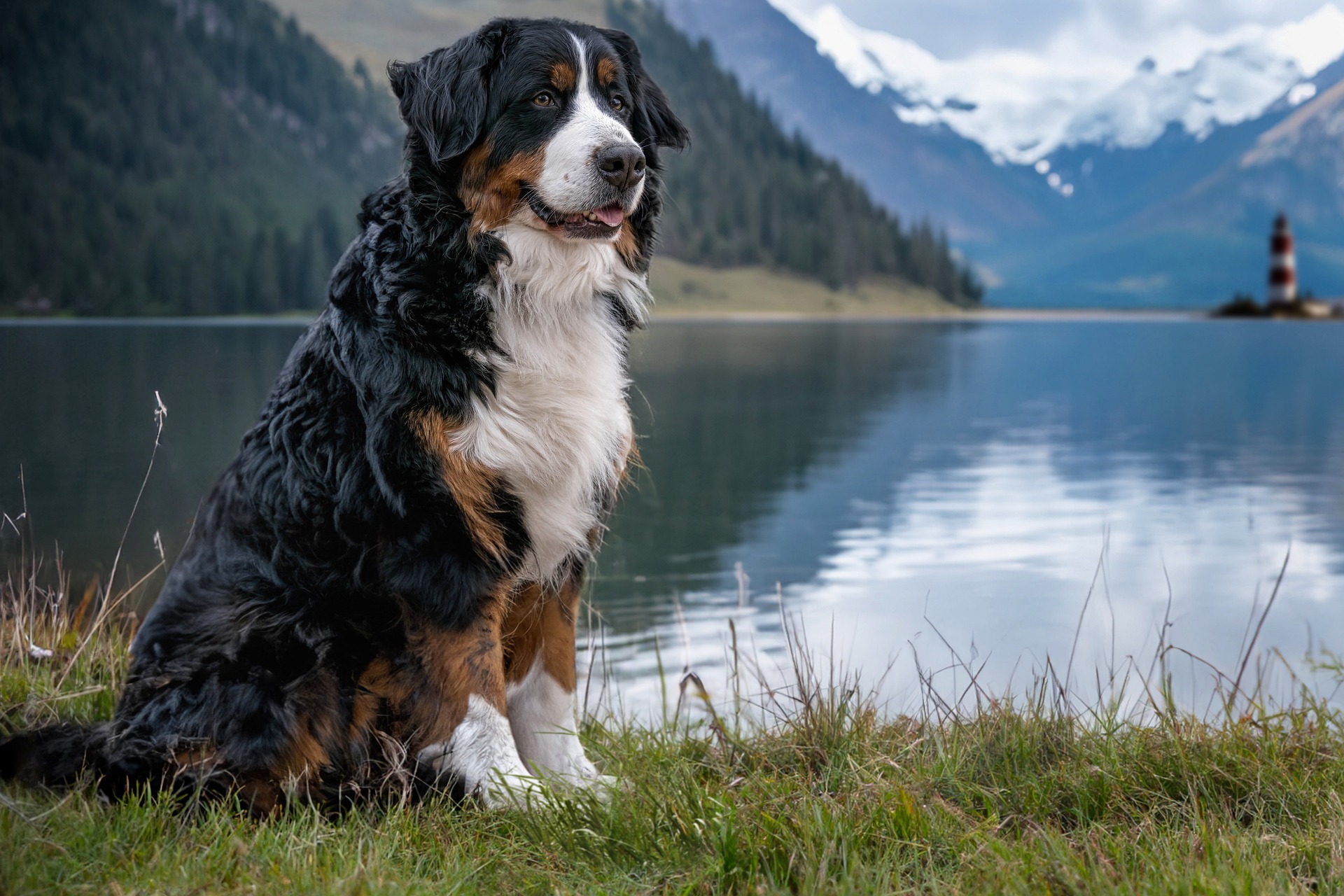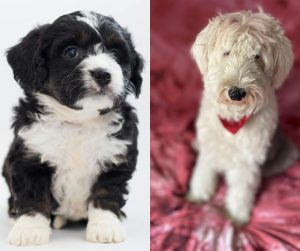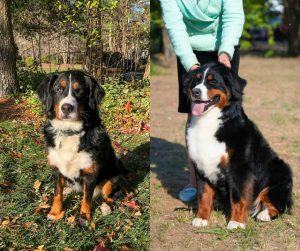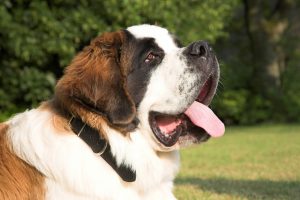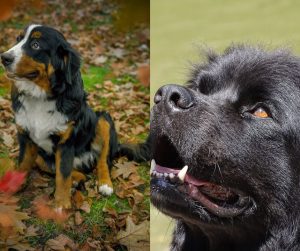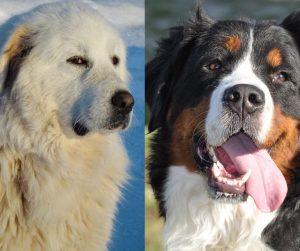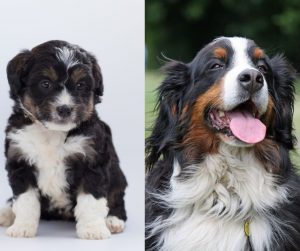When exploring the world of large and lovable working dogs, two breeds often come to mind: the Bernese Mountain Dog and the Swiss Mountain Dog, also known as the Great Swiss Mountain Dog breed. They are well known for their sturdy builds and distinctive tricolor coats.
Both breeds share a common ancestry, tracing back to the working dogs of the Swiss Alps, but they’ve each developed their own unique characteristics and qualities that endear them to dog enthusiasts around the world.
Despite their shared heritage, the Bernese Mountain Dog and the Swiss Mountain Dog have notable differences in size, weight, and temperament. The Bernese is typically more reserved and sensitive, thriving on companionship, while the Swiss is known for its watchful and protective nature, making it an excellent guard dog as well as a family pet.
Understanding the subtleties in their personalities and care requirements is crucial for prospective dog owners to ensure a harmonious match with their lifestyle and environment.
Whether used for working roles or as family companions, these breeds embody the strength and loyalty that were so valued in their historical roles in the Swiss mountains. So, today, we will take a look at the dog breed comparison between Bernese Mountain Dog and Swiss Mountain dog.
Key Takeaways
- The Bernese Mountain Dog and Swiss Mountain Dog are similar but have distinct sizes, temperaments, and care needs
- Both breeds have their origins in the Swiss Alps and were bred for working but adapt well to family life
- Choosing between the two breeds involves considering compatibility with an owner’s lifestyle and environment
Origin and History
When they think of the majestic mountains of Switzerland, many people picture the iconic, friendly Bernese and Swiss Mountain Dogs. These breeds share a rich history deeply rooted in the Swiss region and hold a significant place in the hearts of dog lovers worldwide.
Roots in Switzerland
The Bernese Mountain Dog and the Greater Swiss Mountain Dog both hail from Switzerland, with their histories intertwined with the rugged Alpine landscape. They’re believed to descend from mastiff-type war dogs brought over by Julius Caesar and his Roman legions around 2,000 years ago.
These ancient canines were likely crossed with local herding dogs, resulting in versatile breeds well adapted to the Swiss climate and terrain.
The Bernese specifically originated from the Bern region, hence their name. Today, they are recognized by clubs around the world, including the American Kennel Club. As a working dog, the Bernese is part of the working group of the American Kennel Club.
Historical Roles
Historically, these dogs served multiple roles in Swiss daily life. They were herders, guardians, and draft animals, pulling carts and protecting farms. The Bernese Mountain Dog especially earned its keep during Switzerland’s pre-mechanization era, thanks to its strength and ability to endure the mountainous environment.
The Greater Swiss Mountain Dog is considered the older of the two breeds and was well-regarded for its utility as a draft animal. Dr. Albert Heim, a notable Swiss geologist and dog enthusiast, played a crucial role in the breeds’ recognition and survival during the early 20th century.
Their friendly and helpful nature has earned them spots not just on the farms, but also in the hearts of families, taking on a new historical role as beloved companions. The Saint Bernard is another dog from Switzerland we have to mention. The St Bernard is a bit larger than both these dog breeds. You can also find him in the Italian part of the Alps.
Physical Characteristics
When it comes to the Bernese Mountain Dog vs Swiss Mountain Dog, they share a family resemblance but have notable differences. This section will guide the reader through a comparison of size, distinct colors and markings, and the types of coats to expect from each breed.
Size Comparison
Bernese Mountain Dog
- Height: 23-27.5 inches
- Weight: 70-115 pounds
Greater Swiss Mountain Dog
- Height: 23.5-28.5 inches
- Weight: 85-140 pounds
While both breeds are strong and muscular, the Great Swiss Mountain Dog generally tips the scales with a bit more weight and may stand slightly taller at the shoulder than the Bernese.
Distinct Colors and Markings
Both breeds feature a tricolor pattern consisting of black, rust, and white, but their markings have subtle differences.
Bernese Mountain Dog
- Markings: A white blaze on the face, rust over the eyes, sides of the mouth, front of the legs, and a white chest
Greater Swiss Mountain Dog
- Markings: Similar tricolor pattern; however, they may have a more pronounced white chest and a less prominent white blaze
These breeds carry their colors as a trademark coat, which not only catches the eye but also speaks to their shared heritage.
Coat Types
Bernese Mountain Dog
- Coat Type: Long, shaggy, and straight which requires regular grooming to maintain its look and health
Greater Swiss Mountain Dog
- Coat Type: Shorter, dense, and straight, making it somewhat easier to manage than the Bernese’s coat
The longer coat of the Bernese Mountain Dog can give them a slightly more rugged appearance, while the Greater Swiss has a more sleek and utilitarian coat that suits their hardworking nature.
Temperament and Personality
When considering a Bernese Mountain Dog or a Greater Swiss Mountain Dog, it’s crucial to understand their unique temperaments and personalities to ensure they match your family’s lifestyle.
Both breeds hail from the Swiss Alps and are known for their sturdy build and loyal nature, but they exhibit some distinct traits that prospective owners should be aware of.
Behavioral Traits
Bernese Mountain Dogs and Greater Swiss Mountain Dogs are both affectionate and loyal companions with a noticeable gentle giant character.
The Bernese tends to have a milder energy level, often displaying cuddly and loving behavior, making them excellent family dogs.
Greater Swiss Mountain Dogs, while also affectionate, often show a more dominant personality and require consistent attention to maintain a harmonious household hierarchy.
- Bernese Mountain Dog:
- Affectionate and gentle
- Lower energy level; enjoys relaxing with family
- Greater Swiss Mountain Dog:
- Loyal but more dominant
- Higher energy level; needs a job or activity to stay content
Family Compatibility
Both breeds are known for their deep affection towards family members, with the Bernese Mountain Dog slightly edging out in terms of being family oriented.
They are typically more patient with children and integrate well into a family setting.
The Greater Swiss Mountain Dog also thrives in a family environment but may be better suited to a family accustomed to large, active dogs due to its more intense working temperament.
- Bernese Mountain Dog:
- Highly compatible with families; gentle with children
- Greater Swiss Mountain Dog:
- Enjoys family life; may suit active families better
Training and Socializing
Training and socializing are paramount for both breeds to ensure they develop into well-behaved and obedient dogs.
They are intelligent breeds, but the Bernese might display some stubbornness, making consistent training important.
The trainability of the Swiss is high, with the dog breed often excelling in various dog sports and activities due to their working heritage and need for engagement.
Early socialization can help mitigate the Greater Swiss Mountain Dog’s dominant tendencies.
- Bernese Mountain Dog:
- Intelligent but can be stubborn; consistent training is key
- Early socialization helps with shyness
- Greater Swiss Mountain Dog:
- High working drive; excels in training and activities
- Requires early socialization to channel dominant traits
Health and Lifespan
When it comes to the Bernese Mountain Dog and the Greater Swiss Mountain Dog, they share a lot of love but also some health challenges. Understanding their health and lifespan is crucial for any current or prospective owner who wants to ensure the happiest, healthiest life for their four-legged friend.
Common Health Issues
Both the Bernese Mountain Dog and the Greater Swiss Mountain Dog can unfortunately face a few significant health problems. Here are some common issues they may encounter:
- Hip Dysplasia: A condition where the thighbone doesn’t fit snugly into the hip joint
- Elbow Dysplasia: Similar to hip dysplasia, but affects the elbow joint
- Progressive Retinal Atrophy (PRA): This eye condition can lead to blindness over time
- Cancer: Unfortunately, both breeds have a higher risk of various types of cancer
- Bloat: A life-threatening stomach issue that requires immediate veterinary attention
Preventive Measures
While some health issues are down to genetics, others can be managed with good care. Preventive steps can make a big difference in a dog’s quality of life:
- Regular Vet Visits: Early detection can lead to more successful management of diseases
- Diet and Exercise: Proper nutrition and regular physical activity are essential
- Supplements: Ingredients like glucosamine and chondroitin may support joint health
- Awareness: Knowing the signs of bloat and heart conditions can be life-saving
When it comes to lifespan, Greater Swiss Mountain Dogs typically live around 8 to 11 years, while Bernese Mountain Dogs often have a life expectancy of 7 to 10 years. Taking these preventive measures may help to provide them with a long, loving life.
Care Requirements
When considering a Bernese Mountain Dog or a Greater Swiss Mountain Dog, one must remember they both have a thick, tri-color coat that requires regular grooming and shed seasonally.
Their large size implies a need for adequate exercise and specialized diet to maintain their health.
Grooming and Shedding
Bernese Mountain Dogs and Swissies possess dense coats that shed considerably, especially during shedding season. To keep their coats healthy and manage shedding, regular brushing—at least twice a week—is recommended.
Moreover, more frequent grooming may be necessary during peak shedding periods. Bathing should be done occasionally, but not too often, as it can strip their coat of natural oils.
Exercise and Activity Needs
These breeds are not just big cuddly bears; they’ve got energy to burn. Bernese Mountain Dogs and Greater Swiss Mountain Dogs require regular exercise to support their muscular build and to prevent joint issues.
A variety of activities can meet their exercise needs, but they should involve both physical and mental stimulation.
They thrive on tasks and prefer engaging activities over repetitive ones like fetch. Positive reinforcement is key when training, as they react well to encouragement and attention.
Diet and Nutrition
Balanced nutrition is paramount for these large breeds to keep their joints healthy and maintain their overall well-being.
Their diet should consist of high-quality dog food suitable for large breeds, with a close eye on calorie intake to prevent obesity.
Puppies, especially, require a diet formulated for large breeds to ensure proper bone development. A consistent feeding schedule and measured portions can help maintain a healthy weight, supporting a happy lifestyle.
Role in Modern Life
The Bernese Mountain Dog and the Greater Swiss Mountain Dog both find their unique places in today’s world, not just as companions but as active participants in various roles. They bring their historical skills to modern tasks, demonstrating versatility whether in a family home or on a working farm.
Adaptability to Living Spaces
Bernese Mountain Dogs and Greater Swiss Mountain Dogs require ample space due to their size and energy levels.
While traditionally bred for farm work, they can adapt to different living spaces with adequate exercise.
Bernese Mountain Dogs may manage apartment living if given regular, lengthy walks, but they truly thrive with more room to roam.
- Apartment: Possible for Bernese, but challenging for Swiss dogs due to their size
- House with Yard: Ideal for both breeds, providing space for exercise and play
In essence, these dogs love being part of family activities, whether it’s hiking or simple backyard fun.
Work and Utility
As members of the working group, both breeds possess significant strength that historically suited them for farm work and pulling carts.
Today, the Bernese often participates in competitive obedience and tracking, making use of their intelligent and eager-to-please nature.
- Farm Dog: Still used in some farm settings for herding and guarding
- Guard Dog: Natural protective instincts make them reliable for home security
- Companion Roles: Excel in therapy and service due to their gentle demeanor
Greater Swiss Mountain Dogs’ robust build and resilience lend themselves to similar working roles, but they are particularly known for their capability in pulling and draft work.
Their strong guardianship qualities ensure they remain vigilant, whether in a pastoral setting or a suburban home.
Choosing the Right Breed for You
When faced with the heartwarming decision between the Bernese Mountain Dog and the Swiss Mountain Dog, potential pet parents must consider their lifestyle and financial commitment. Each breed has unique characteristics shaped by their history and demands particular care and attention.
Lifestyle Compatibility
Both the Bernese Mountain Dog and the Greater Swiss Mountain Dog hail from the Swiss Alps, boasting a rich history as hardworking companions.
The Bernese tends to be slightly smaller, reaching a height of 23-27 inches and a weight of 70-115 pounds, while their Swiss counterpart often stands taller and heavier.
These breeds require ample space to move and thrive best with owners who lead active lifestyles, as both have high exercise needs.
Socializing and positive reinforcement training are crucial from early puppyhood, especially in homes with children.
They’re generally known to be good-natured, making them excellent family pets. However, the Swiss Mountain Dog is often described as more vigilant, likely to watch over the home, whereas the Bernese showcases a bit more devotion to their family members.
Cost of Ownership
The financial responsibility when opting for either breed is significant. Here’s a quick look at the potential costs:
Initial Costs (Purchase Price, Vaccinations, Supplies)
- Bernese Mountain Dog: $800-$2,000
- Greater Swiss Mountain Dog: $1,500-$3,000
Recurring Costs (Food, Grooming, Vet Visits)
- Bernese Mountain Dog: $100-$150 per month
- Greater Swiss Mountain Dog: $120-$170 per month
Prices may vary due to factors such as breeder reputation and geographic location.
Their thick coats mean high grooming needs to maintain their impressive look. Both breeds can present sizeable veterinary bills, with a special note that they have lifestyles that demand a diet to match their size and energy levels.
Potential owners must prepare for the significant cost of a diet that can sustain these gentle giants, who wear loyalty on their broad foreheads and carry strength in their sturdy frames.
Breed Advocacy and Clubs
When exploring the world of Bernese and Greater Swiss Mountain Dogs, breed advocacy and clubs play a pivotal role. They ensure that standards are upheld and provide invaluable support to owners and breed enthusiasts.
Promoting Breed Standards
The American Kennel Club (AKC) is integral in maintaining the breed standards for both the Bernese and Greater Swiss Mountain Dogs.
Breed standards are crucial as they serve as a blueprint ensuring the health, temperament, and appearance of dogs.
For instance, they specify clear guidelines on size — with the Bernese ranging in height from 23-27.5 inches and weighing 70-115 pounds, while the Greater Swiss stands taller at 23.5-28.5 inches and weighs between 85-140 pounds.
Breed clubs, such as the Bernese Mountain Dog Club of America or the Greater Swiss Mountain Dog Club of America, also play a key role.
They often collaborate with the AKC in promoting these standards. By doing so, they help to preserve the rich breed history and distinctive characteristics of each.
Such clubs also provide resources for managing common health issues like joint dysplasia, ensuring the breeds’ well-being.
Community and Support
Breed clubs aren’t just about standards; they are at the heart of the community. They bring together owners and admirers, offering support and fostering camaraderie through events and educational opportunities.
Participation in these clubs can deepen one’s understanding of the breeds’ traits and nurture a supportive network. This network is especially precious for prospective and current owners alike.
In these clubs, stories are shared, and experiences exchanged, creating a wealth of communal knowledge. This personal touch helps everyone feel more connected, which is especially beneficial when dealing with the challenges and joys of raising these captivating canine companions.

